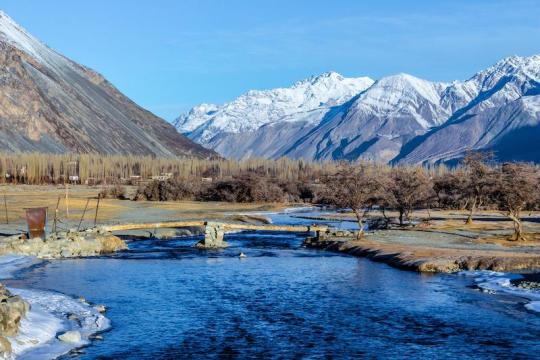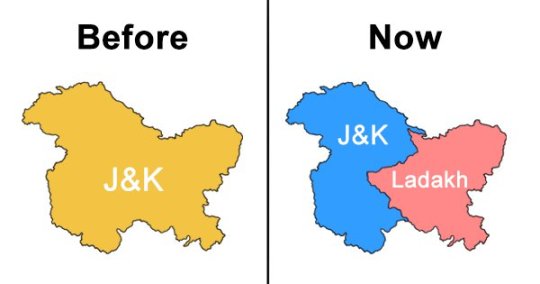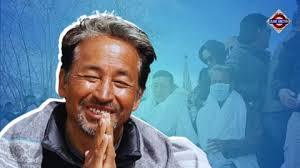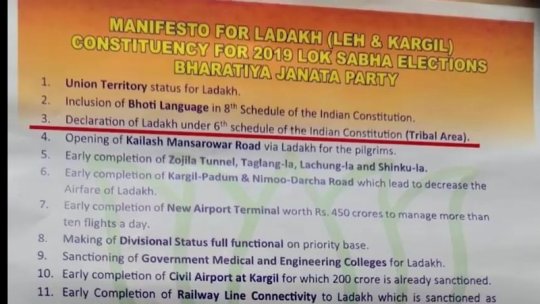#Constitution of Indira
Explore tagged Tumblr posts
Text
'कांस्टीट्यूशन ऑफ़ इंडिया' को 'कांस्टिट्यूशन ऑफ़ इंदिरा' बनाने वाले अब दे रहे हैं संविधान की दुहाई; जयराम ठाकुर
#News 'कांस्टीट्यूशन ऑफ़ इंडिया' को 'कांस्टिट्यूशन ऑफ़ इंदिरा' बनाने वाले अब दे रहे हैं संविधान की दुहाई; जयराम ठाकुर
Mandi News: नेता प्रतिपक्ष जयराम ठाकुर ने सराज विधानसभा क्षेत्र के थुनाग मंडल के परवाड़ा में आयोजित “संविधान गौरव अभियान” को संबोधित करते हुए कहा कि कांग्रेस ने सिर्फ गांधी नेहरू परिवार के हितों के बचाव के लिए हमेशा संविधान की धज्जियां उड़ाई हैं। कांग्रेस की नेता रही स्वर्गीय इंदिरा गांधी को न्यायालय के समक्ष पेश न होना पड़े उसके लिए भी संविधान में संशोधन करदिए गए। कांग्रेस ने अपने कार्यकाल के…
0 notes
Text









New Fargo Season 5 character portraits, via the FX website. Official character descriptions under the cut.
Dorothy "Dot" Lyon: Depending on who you ask, "Dot," portrayed by Juno Temple, is a wife and mother, a member of the PTA, a fighter, survivor or a tiger. She’s tenacious to almost a delusional fault, never giving up no matter how impossible the circumstances. Ultimately, she’s a mama bear with a lion’s heart.
Roy Tillman: “Roy Tillman,” portrayed by Jon Hamm, is one of those constitutional sheriffs, a rancher preacher, defender of the American gospel. A man who works from sunup to sundown shepherding God’s land. In Roy’s own reality, he is the law and therefore is above the law; he’s the judge, jury and too often the executioner.
Lorraine Lyon: “Lorraine Lyon,” portrayed by Jennifer Jason Leigh, is CEO of the largest Debt Collection Agency in the country, with two billion dollars in annual revenue. Lorraine is poised, regal and opinionated. She’s also a huge donor to any candidate or cause that she believes in, regardless of political affiliation (read: anyone that can be helpful to her in the future).
Wayne Lyon: “Wayne Lyon,” portrayed by David Rysdahl, has the forced cheer of a man whose mother raised him with a thick brew of disappointment and guilt. Now he owns a car dealership and three quarters of a fishing boat. A sweet guy who doesn’t match up to society’s (or his mother’s) definition of masculinity, his ideal evening is playing sock hockey at home with his daughter, Scotty.
Gator Tillman: “Gator Tillman,” portrayed by Joe Keery, is a handsome charmer, the way the snake in the garden was a charmer. He’s a sapling struggling to grow in the shadow of an oak, desperate to prove himself to his larger-than-life father in the absence of a mother’s love. With daddy issues up there with Oedipus Rex’s, Gator wants to be a winner but unfortunately doesn’t know what the word means.
Witt Farr: “North Dakota Deputy Witt Farr,” portrayed by Lamorne Morris, is the guy when you look up the word “reliable” in the dictionary, you see his picture. He splits the check down to the cent, not because he’s cheap but because he’s fair. He’s dogged, earnest and Minnesota Nice.
Indira Olmstead: “Minnesota Police Deputy Indira Olmstead,” portrayed by Richa Moorjani, is a practical woman – socks before shoes – and good at puzzles, which may have led to her career in law enforcement. She struggles to manage her finances while supporting her husband Lars and his delusional dream of winning the Masters Golf Tournament.
Ole Munch: Age unknown, birthplace unknown. On any given day, “Ole Munch,” portrayed by Sam Spruell, looks as though he could be 30-60. Some say he has always been here, blowing through the American landscape – the dark shadow waiting for us at the end of the hall. He’s carved from stone, relentless as the sea, the forces of physics don’t apply to him.
Danish Graves: “Danish Graves,” portrayed by Dave Foley, is Lorraine Lyon’s in-house counsel and primary advisor. A country club type, who has never been in a real fight, but sees himself as a winner, when clearly Lorraine is the heavyweight champion and he just holds her spit bucket.
28 notes
·
View notes
Text


Asia, Africa, India and Latin America
While we have been focusing on North America, the park model was actually exported throughout the world, forcing millions of tribal peoples out of their habitats/territories. The practice continues to this day in Asia, Africa and India, for example, where non-profit foundations and United Nations sponsored organizations are eagerly trying to protect what little land is left that hasn’t been destroyed by industrial modes of living.
Unfortunately, be it the Twa peoples expulsion from Congo’s Kahuzi-Biega National Park, the Maasai from the Amboseli National Park in Kenya or tribal people in southern India forced out of the Indira Gandhi National Park as part of an “eco-development” scheme funded by the Global Environment Facility, parks and conservation lands remain one more force which dispossesses tribal peoples. In Africa alone, one million square kilometers of land has been expropriated for conservation over the past one hundred years. Estimates in India range around three-quarters of a million people pushed off their traditional lands for conservation, in Africa the number is likely in the millions. Unfortunately, and ironically, land that has long been occupied and protected by indigenous peoples continues to be deemed “wild” and therefore suitable for “conservation” primarily by having them declared parks, thus making them out of bounds for the indigenous peoples who maintained them in the first place.
What happens to the people who once lived rich, meaningful lives within these habitats? They become like you and I. Dispossession leads to rootlessness, discouragement, depression, inability to be self-reliant, bad nutrition, broken communities, severed kinship ties, and anger, too often turned inward or directed to the nearest person.
I think we need to realize that dedication to creating parkland and conservation areas does not necessarily coincide with helping regenerate ways of living harmoniously with a habitat. More often than not it promotes a misanthropic outlook that posits intact, healthy land areas being by definition “human-free’’, rather than capitalism-free. We tend to ignore the fact that indigenous peoples seeking to maintain or renew their traditional life ways need to have access tothese areas, especially if the parkland in question was actually part of their traditional territory.
Even liberal organizations like UNESCO have begun to realize that there has been a negative social impact associated with many protected areas. In some places in Asia, Africa and Latin America, provisions have been made for local control so that traditional lifestyles might continue. But these tend to be limited “buffer zones”, where the original inhabitants can control “development projects”. These attempts have not succeeded.
Apparently coalitions of indigenous peoples have had some success in forcing international bodies to recognize their inherent right to manage their traditional territories. “In the 1990s, the World Wildlife Fund for Nature (WWF), the World Conservation Congress and the World Commission on Protected Areas all adopted new policies and resolutions which strongly endorse indigenous peoples’ rights and promote the co-management of protected areas, based on negotiated agreements.[8]” However, these organizations aren’t arguing for free access to one’s habitat, but to “negotiated agreements” with outsiders and centralized authority, and land bases integrated into the scheme of state regulations and subject to the pressures of politics and the market.
Regardless of some recognition, many parks and conservation areas, especially in impoverished countries, remain part of the greater theft of traditional homelands by arrogant, powerful outsiders who impose their views of what constitutes healthy habitats. It isn’t parks and conservation areas that will help stem the tide of destruction and plunder, but recognition that new ways of living are required. And these new ways can be informed by the old ways ofland based people.
#freedom#ecology#climate crisis#anarchism#resistance#community building#practical anarchy#practical anarchism#anarchist society#practical#revolution#daily posts#communism#anti capitalist#anti capitalism#late stage capitalism#organization#grassroots#grass roots#anarchists#libraries#leftism#social issues#economy#economics#climate change#climate#anarchy works#environmentalism#environment
3 notes
·
View notes
Text








Fargo season 5's story [begins] with Dorothy "Dot" Lyon (Temple). After a series of unexpected events gets her in trouble with the authorities, Dorothy is suddenly thrown back into a life she thought she left behind. Dorothy, a seemingly Midwestern housewife, is the person that North Dakota Sheriff Roy Tillman (Hamm) has been searching for. A rancher, preacher, and constitutional lawman, Tillman believes he's above the law.
Tillman has Gator (Keery), his loyal but feckless son at his side. Gator is desperate to prove himself to his father. However, since Tillman can't rely on his son, he calls on the help of Ole Munch, described in the Fargo season 5 synopsis as a "shadowy drifter of mysterious origin." As her darkest secrets begin to unravel, Dorothy tries to protect her family from her past, but her loving and well-meaning husband (Rysdahl) keeps running to his mother, Lorraine Lyon (Leigh). Lorraine is the CEO of the largest debt collection agency in the country, and she's not too fond of Dorothy.
Dorothy's strange actions also catch the attention of Minnesota Police Deputy Indira Olmstead (Moorjani) and North Dakota Deputy Witt Farr (Morris), while Lorraine turns to her in-house counsel and adviser Danish Graves (Foley) to help her daughter-in-law. Fargo season 5, produced by its showrunner, writer, and director Hawley, looks to rely on a talented ensemble to weave another complicated tale about crime and family.
source: Deadline/Screen Rant
17 notes
·
View notes
Text

{anya chalotra, 30, ciswoman, she/her} we are so glad to see you safe, DEPUTY PRIME MINISTER MAYA ROUSSEAU of FRANCE! it’s dangerous out in the world these days, but i hear that you are PERSUASIVE and PRINCIPLED enough to handle it. just don’t let your UNCOMPROMISING bring you down! stay on your guard, because with your secret being at risk for exposure, you wouldn’t want everyone to find out about your SON’S TRUE LINEAGE AND THE CLAIM THEY HAVE ON THE ENGLISH CROWN. {mara, 26, est, she/her}
Background:
Maya Indira Rousseau was born into the prestigious Rousseau family, a once-prominent noble lineage in France. Her family's status, however, was diminished when the Orleans, the ruling dynasty, deemed them unworthy and exiled them from the court. This exile was a result of political machinations and rivalries within the French nobility, compounded by the Rousseau family's outspoken support for reformist ideas that threatened the traditional power structures.
Sent away from the intrigues of the French court, Maya found herself in England at a young age. Her family arranged for her to stay with distant relatives in London, hoping that the distance would protect her from the political fallout in France and provide her with new opportunities.
In England, Maya was introduced to high society and quickly became known for her intelligence, beauty, and charm. It was during this time that she met a gentleman, a charismatic and dashing prince who captured her heart. Unbeknownst to her initially, was the man was the Crown Prince of England, living incognito to experience life outside the constraints of royalty.
Maya and the Crown Prince of England romance blossomed quickly, but their time together was short-lived. He was called back to his royal duties and never returned for Maya as he had promised. Heartbroken and disillusioned, Maya discovered she was pregnant. Facing a future of uncertainty, she turned to her best friend, Henri Duval, for support.
Henri Duval was a nobleman of modest means but immense character. Deeply in love with Maya and determined to protect her, he offered her marriage and his name. Grateful and seeking stability for her unborn child, Maya accepted. Henri and Maya were married, and she gave birth to a son, whom they named Nicholas. Despite the unconventional start, their marriage was filled with mutual respect and affection.
For a time, Maya believed she had found happiness and security. Henri was a loving husband and father, and Nicholas grew up in a nurturing environment. However, the political landscape in France was changing. The Reckoning—a period of intense civil unrest and political upheaval—swept through the country, leading to the establishment of a constitutional monarchy.
Tragically, Henri was killed during the upheaval, leaving Maya a widow. Recognizing her intelligence, leadership abilities, and unwavering principles, the new government granted her the title of Deputy Prime Minister, acknowledging her equal status to her late husband. Maya’s persuasive abilities and principled nature made her a respected and influential figure in the newly formed government.
Personality:
Maya is persuasive, possessing a natural talent for rhetoric and negotiation. Her principled stance on issues makes her a beacon of integrity and trustworthiness, qualities that have earned her the respect of both her peers and the public. Her unwavering commitment to her beliefs sometimes makes her appear uncompromising, which can be both a strength and a challenge in the delicate world of politics.
Her experiences have shaped her into a resilient and determined individual. The pain of her past, particularly the abandonment by her first love and the subsequent struggles, have imbued her with a deep sense of empathy and a drive to create a better future for her son and her country.
Secret and Motivations:
Maya harbors a significant secret: her son Nicholas’s true lineage and his legitimate claim to the English crown. This knowledge is a double-edged sword. On one hand, it represents a potential power that could change the political landscape of Europe; on the other, it poses a grave risk to her son’s safety and her political career if it were ever exposed.
Her primary motivation is to protect her son and ensure his future. She is also driven by a desire to see France thrive under the new constitutional monarchy. Maya is dedicated to balancing the power between the reigning monarch and the elected government, striving to create a stable and prosperous nation.
Current Situation:
As Deputy Prime Minister, Maya finds herself at the center of a politically charged France. The country is ruled by both the reigning Monarch and the government-elected Prime Minister, a delicate balance of power that is constantly under threat. Civil unrest and the remnants of revolutionary fervor still linger, and the question of who holds the true power in France is ever-present.
Maya’s persuasive skills and principled nature make her a formidable player in this arena. She navigates the complex political landscape with care, leveraging her intelligence and charisma to advocate for policies that reflect her vision of justice and equality. However, her uncompromising stance on key issues sometimes puts her at odds with other influential figures, including those within her own government.
The secret of her son Nicholas’s lineage is a constant source of anxiety. She must protect this secret at all costs, knowing that its revelation could destabilize not only her family but also the fragile political equilibrium in France and England. Maya carefully manages her public and private lives, ensuring that her son remains unaware of his true heritage while preparing him for a future where he might need to understand and possibly confront his lineage. He is 8 years old.
Maya’s journey is one of balancing her public responsibilities with her private fears. She works tirelessly to secure her family's legacy and the future of France, all while guarding a secret that could change the course of history.
#I think this might be my favorite muse I have ever written#thank you tortured poets department for the mus e#theopulent.intro
3 notes
·
View notes
Text

Advocates who practice in high courts typically possess specialized knowledge and expertise in various legal matters. Here are some notable advocates who have appeared in high courts:
Harish Salve: Known for his expertise in constitutional, commercial, and taxation law, Harish Salve has represented clients in high-profile cases in India's Supreme Court and various high courts.
Kapil Sibal: A prominent lawyer and politician, Kapil Sibal has argued several significant cases in high courts, particularly in matters of constitutional law, civil rights, and corporate disputes.
Abhishek Manu Singhvi: With extensive experience in constitutional law, Singhvi has appeared in numerous cases in high courts, advocating for clients in diverse legal matters.
Indira Jaising: Renowned for her work in human rights and women's rights, Jaising has appeared in high courts across India, advocating for social justice and legal reform.
Mukul Rohatgi: Former Attorney General of India, Rohatgi has represented clients in various high courts, specializing in corporate law, constitutional law, and commercial litigation.
Gopal Subramanium: A distinguished lawyer and former Solicitor General of India, Subramanium has argued numerous cases in high courts, with a focus on constitutional law, human rights, and public interest litigation.
P. Chidambaram: A veteran lawyer and politician, Chidambaram has appeared in high courts on behalf of clients in complex legal matters, including criminal law, economic offenses, and constitutional issues.
2 notes
·
View notes
Text
The Ladakh Protest: The 21-day Hunger Strike led by Sonam Wangchuk

Ladakh, famously known as “Mars on Earth”, is the perfect destination where the mind slows down and the soul finds its path.
It is the northeastern Union territory of India, known for its highest mountain ranges, mesmerizing landscapes, beautiful deep valleys, crystal clear blue lakes, diverse wildlife, highest motorable mountain roads, Buddhist heritage, and the overall picturesque beauty of the place.
Ladakh: A union territory without legislature

Ladakh, which was a part of Jammu and Kashmir since 1847, was separated from Indian-administered Kashmir in 2019 and was reconstituted as a Union territory on October 31, 2019.
People of Ladakh have constantly demanded separate territory since the 1930s due to the unfair treatment of Kashmir and the prevailing cultural differences between people of Kashmir and Ladakh.
The formation of Ladakh as a separate Union territory was widely celebrated. Still, people were disappointed because it was made a UT without a legislative assembly and would have a lieutenant governor, while Jammu and Kashmir had a legislature.
What does it mean to have no legislature in Ladakh?
Unlike J&K, Ladakh cannot elect its own representative.
Ladakh will be ruled directly by the central government through a lieutenant governor as an administrator.
The President of India has the power to form rules and regulations for Ladakh, according to Article 240.
Sonam Wangchuk following his Father’s footsteps
Sonam Wangyal was born in 1925 in a small village in the Leh district of Ladakh. He worked his entire life for the rights of the people of Ladakh. He had strong secular beliefs.
He was appointed as the MLC of Jammu and Kashmir from 1957–1967 and as the MLA from 1967–1972, due to his selfless service toward the people of Ladakh.
Wangyal was also an active member in the campaign for ST status for Ladakhis, which was carried out between 1982 and 1984.
In 1984, on his five-day hunger strike, the former Prime Minister, Indira Gandhi, visited Leh and requested Wangyal to withdraw from the strike with the promise of granting the status of ST to the people of Ladakh.

Following his father’s strong morals and values and showcasing his devotion to the land and people of Ladakh, Sonam Wangchuk, a nature activist, engineer, innovator, and educationalist, began a “climate fast for 21 days” on March 6, 2024.
Why are they protesting?
The primary goal behind the protest is to raise awareness about the fragile ecosystem of Ladakh endangered by the growing industrial and developmental projects approved in New Delhi without consent, a threat posed as a result of having no legislative assembly in the Union territory of Ladakh.

The residents of Ladakh have two key demands:
Full-fledged statehood for Ladakh: the residents have demanded to elevate Ladakh’s status as a Union territory to a full-fledged state. This would enable Ladakh to have its own government and the right to form its own rules and regulations in favor of the land and people of the territory.
Integration of Ladakh in the 6th Schedule of the Constitution: The 6th Schedule aims to protect areas with tribal and indigenous populations. By including Ladakh in the 6th schedule, it would allow the state to establish autonomous districts and regional councils.
These elected bodies will have the power to administer and protect the tribal regions of the area. It would give the Ladakhis more control over water management, land use, and cultural preservation.
What is the government’s response to the ongoing protest?
Unlike the response and action taken upon the hunger strike carried out by Wangchuk’s father, the present-day government is MIA.
The current government seems unbothered by the demands and protests in Ladakh, just the way it is, and the deteriorating situation in Manipur.
The pioneers of the movement and every other active citizen in and out of Ladakh are furious about the inaction of the government and the PM, who knowingly promised in his 2019 manifesto of Lok Sabha, that Ladakh will be incorporated into the 6th schedule of the constitution. But apparently, they failed to honor their promises.

Lack of media coverage:
The lack of media coverage is infuriating for the people of Ladakh and the active citizens of India.
Although the independent media and journalists who are physically present in the ongoing protests do cover the news for the country, But it is disappointing to witness the lack of coverage by mainstream media and the big houses.
The scarcity of coverage of this major issue conceals the truth from the nation. The nation wants to know more about the concerns and affairs of the territory. Unless there is some news from the local media houses, the lack of coverage by the recognized media houses keeps the common man from knowing what is really happening there.
The current news on the Ladakh protest:
According to the current news,
Wangchuk survived solely on water and salt during the 21-day hunger strike (inspired by Gandhiji), which lasted from March 6th to March 26th.
In his speech, he talked about the “21-day fast"—that 21 days was the longest fast that Gandhiji kept during the independence movement.
Wangchuk states that the 21-day fast is over, but the protest will still continue. They will only rest when the government agrees to fulfill their demands.
Wangchuk said, “After me, women will begin a 10-day fast tomorrow. This will be followed by youth and Buddhist monks. Then it could be women, or I could come back. This cycle will go on.”
After ending his 21-day fast, Wangchuk stated “We will continue our struggle (in support of our demands). The gathering of 10,000 people at the venue and the participation of over 60,000 others over the past 20 days is a testimony of the people's aspirations.”
Conclusion:
All things considered, Ladakh, the "Land of High Passes," stands at a crossroads. While the echoes of their protests might fade from national headlines, the Ladakhi people's yearning for a brighter future persists. Whether they find resolution in the sixth schedule status or the full-throated roar of statehood, one thing is certain: Ladakh's story is far from over.
3 notes
·
View notes
Text
On the night of June 25, 1975, Indira Gandhi declared a state of emergency in India, suspending constitutional rights and rounding up her political opponents in midnight raids across the country. In the twenty-one harrowing months that followed, her regime unleashed a brutal campaign of coercion and intimidation, arresting and torturing people by the tens of thousands, razing slums, and imposing compulsory sterilization on the poor. Emergency Chronicles provides the first comprehensive account of this understudied episode in India’s modern history. Gyan Prakash strips away the comfortable myth that the Emergency was an isolated event brought on solely by Gandhi’s desire to cling to power, arguing that it was as much the product of Indian democracy’s troubled relationship with popular politics.
Drawing on archival records, private papers and letters, published sources, film and literary materials, and interviews with victims and perpetrators, Prakash traces the Emergency’s origins to the moment of India’s independence in 1947, revealing how the unfulfilled promise of democratic transformation upset the fine balance between state power and civil rights. He vividly depicts the unfolding of a political crisis that culminated in widespread popular unrest, which Gandhi sought to crush by paradoxically using the law to suspend lawful rights. Her failure to preserve the existing political order had lasting and unforeseen repercussions, opening the door for caste politics and Hindu nationalism.
Placing the Emergency within the broader global history of democracy, this gripping book offers invaluable lessons for us today as the world once again confronts the dangers of rising authoritarianism and populist nationalism.
2 notes
·
View notes
Text
Live an Exotic Universe in Delhi, Filled with Aristocracy

INTRODUCTION
Attaining the reputation of being a historically rich city, New Delhi flourishes as the most perfect avenue which is also the perfect destination for emerging as a ravishing real estate as well as a tourist destination.
New Delhi is rich in all aspects, directing people to lead a very luxurious lifestyle. This city is an ideal choice when it comes to attaining an avenue where people can own a mansion-like abode in addition to being enclosed with a sturdy infrastructural advancement.
This entire locality is the true embodiment of sumptuousness, constituting numerous great neighbourhoods. As a potential investor or end-user, you need to look for authentic sources that will explain to you as to how should choose a particular property or location.
In this article, you will be able to figure out some very intriguing points, with regard to the latest launch by DLF, known as DLF One Midtown. However, before stating some essential points on this brand-new development, you must come across some important points on Moti Nagar which is the permanent address of this development.
ABOUT MOTI NAGAR
In order to make a well-informed decision regarding investment, it is important that you become aware of a lucrative neighbourhood from where you can gather sufficient information. Moti Nagar lies in West Delhi which is one of the popular localities of Delhi.
Additionally, what makes Moti Nagar extra special is the close association with many great landmarks, such as;
Connaught Place
Statesman House
Mandi House
Barakhamba Road
Punjabi Bagh
Karol Bagh
Rajouri Garden
Kirti Nagar
Netaji Subhash Place
Pitampura
Indira Gandhi International Airport
Aerocity
Mahipalpur
Dhaula Kuan
Delhi Cantt.
These avenues are accessible within a very short span of time, i.e. 10-30 minutes of time span. Members dwelling here will find great connectivity to all major areas are accessible via a wide array of overpasses, underpasses, and flyovers.
Moti Nagar is also positioned in close association with many great entertainment arcades, offering people to enjoy to their fullest. Here are the names of some very amazing social hubs, widely renowned among people coming from across the borders;
Janpath Market
Rajouri Garden Market
Tilak Nagar Market
Palika Bazaar
Kirti Nagar Furniture Market
Karol Bagh Market
Kamla Nagar Market
All these are widely famous local street shopping centres, offering people a great advantage of accessing some of the best quality apparel, accessories, jewellery, and many other spectacular items at very affordable prices.
Along with this, residents of this locality, residents of this destination will also be able to rejuvenate themselves in some of the most high-end hotels, shopping malls, multiplexes, restaurants, cafes, coffee houses, 5-star hotels, and many more, placed within 10-15 minutes from their respective residences.
DLF ONE MIDTOWN, MOTI NAGAR
DLF One Midtown, a resplendent residential development, launched in Moti Nagar is the true incarnation of aristocracy and royalty. This is a super-luxury property, offering 2, 3, and 4 BHK household residences where each one of them is crafted with perfection and detailed craftsmanship.
Encompassing the total land parcel of 5.5 acres, DLF One Midtown Delhi is a ravishing development that accommodates a total of 913 rich apartments and 4 exotic towers, overlooking 128 acres of greenery along with a picturesque view of urban skylines.
Along with offering an extensive range of the most exotic facilities, residents of DLF One Midtown Shivaji Marg Moti Nagar will be able to acquire the real essence of sustainability.
People who are residing here will offer residents a very lucrative opportunity to cherish a very affluent style of living, catering to the high-end aspirations of every age group.
CONCLUSION
If you wish to become the permanent receiver of the real meaning of richness and serenity altogether in a vibrant arena like Delhi, DLF One Midtown is the perfect development for every millennial.
0 notes
Text
Who is the Best Lawyer in the Supreme Court of India?

The Supreme Court of India, as the highest judicial authority in the country, is home to some of the finest legal minds. Lawyers who practice here are known for their expertise, sharp intellect, and ability to argue complex cases that shape the nation's legal landscape. But when it comes to identifying the best lawyer in the Supreme Court of India, the answer isn't as straightforward as one might think.
The Definition of 'Best' in the Legal Sphere
The term "best lawyer" is subjective and varies based on multiple parameters, such as experience, legal acumen, landmark cases handled, client satisfaction, and overall influence in shaping Indian jurisprudence. Some lawyers are known for their constitutional law expertise, while others shine in corporate law, criminal law, or human rights litigation.
Instead of naming a single individual, let us explore some of the most notable Supreme Court lawyers who have left an indelible mark on the Indian judiciary.
Harish Salve – The Corporate and Constitutional Law Expert
One of India's most celebrated legal luminaries, Harish Salve is known for his proficiency in constitutional law, taxation, and corporate law. He has represented high-profile clients, including large corporations and even the Indian government.
Notable Cases:
Represented India in the Kulbhushan Jadhav case at the International Court of Justice (ICJ)
Defended Mukesh Ambani's Reliance Industries in major corporate disputes
Played a key role in the Vodafone tax case, securing a landmark victory
His persuasive arguments and deep knowledge of legal precedents make him one of the most sought-after lawyers in India.
Fali S. Nariman – The Constitutional Law Veteran
A legal giant, Fali S. Nariman has been a leading figure in Indian constitutional law for decades. With a career spanning over 70 years, his advocacy has influenced numerous landmark judgments.
Notable Cases:
Fought against the National Judicial Appointments Commission (NJAC), upholding judicial independence
Played a significant role in cases related to environmental law and human rights
His views on judicial integrity and constitutional governance are widely respected
His ability to balance judicial activism with legal conservatism makes him a towering figure in Indian law.
Kapil Sibal – The Multi-Faceted Legal Mind
Apart from being a distinguished lawyer, Kapil Sibal has served as a Union Minister and is known for his sharp legal skills, particularly in political and constitutional cases.
Notable Cases:
Defended the Congress party in high-profile political cases
Represented several high-net-worth individuals in corporate disputes
Fought critical cases related to civil liberties and free speech
Sibal's courtroom presence and ability to turn the tide in challenging cases make him a formidable advocate in the Supreme Court.
Gopal Subramanium – The Ethical Powerhouse
Gopal Subramanium, a former Solicitor General of India, is known for his deep commitment to justice and ethical practice. He is a key figure in human rights and constitutional litigation.
Notable Cases:
Assisted in the Ajmal Kasab trial following the 26/11 Mumbai attacks
Played a crucial role in cases involving the interpretation of constitutional rights
Known for his principled stand on judicial appointments
His eloquence and depth of legal knowledge make him one of the most respected lawyers in the Supreme Court.
Mukul Rohatgi – The Former Attorney General
Mukul Rohatgi, a former Attorney General of India, is known for his aggressive litigation style and ability to handle high-profile constitutional and corporate cases.
Notable Cases:
Defended the government in several key constitutional matters
Represented industrialists and politicians in sensitive legal battles
Played a role in cases related to personal liberties and governmental policies
His direct approach and powerful advocacy skills make him a heavyweight in the legal domain.
Indira Jaising – The Champion of Human Rights
Indira Jaising is one of India’s most influential human rights lawyers, known for fighting cases related to women's rights, gender equality, and social justice.
Notable Cases:
Represented women in the Sabarimala temple entry case
Fought against the criminalization of same-sex relationships before Section 377 was struck down
Advocated for transparency in judicial appointments
Her fearless advocacy and commitment to justice make her a significant force in the legal fraternity.
Conclusion: Is There a Single Best Lawyer?
Given the diversity of legal fields and the strengths of different lawyers, it is impossible to pinpoint a single "best" lawyer in the Supreme Court of India. Each of the advocates mentioned above has demonstrated excellence in their respective areas and has contributed significantly to the evolution of Indian law.
If one is looking for the best lawyer in a particular field, the choice will depend on the nature of the case:
For corporate law – Harish Salve or Mukul Rohatgi
For constitutional law – Fali S. Nariman or Kapil Sibal
For human rights and social justice – Indira Jaising
For a well-balanced, ethical approach – Gopal Subramanium
Ultimately, the best lawyer is the one who fits the needs of the case in question. The Supreme Court of India is fortunate to have such a diverse pool of exceptional legal talent, each contributing to the country's legal and democratic framework.
0 notes
Text
[ad_1] SGT University takes pride in announcing that its esteemed Chancellor, Shri Ram Bahadur Rai, has received the Padma Bhushan, India’s third-highest civilian award, in recognition of his outstanding contributions to journalism, education, and literature. The award, conferred by the Government of India on the occasion of the 76th Republic Day, is a testament to Shri Rai’s lifelong dedication to shaping the intellectual and cultural landscape of the nation. In Frame: Shri Ram Bahadur Rai, Chancellor of SGT University A revered author, educator, and veteran journalist, Shri Ram Bahadur Rai has dedicated decades to advancing knowledge and truth. He was earlier honoured with the Padma Shri, India’s fourth-highest civilian award, in 2015. Shri Ram Bahadur Rai’s remarkable career began with Hindustan Samachar. He documented historical events such as the Bangladesh Liberation War through vivid eyewitness accounts published in the Hindi daily Aaj. Later, as Bureau Chief and News Editor of Jansatta, and briefly as Special Correspondent for Navbharat Times, he set unparalleled standards in Indian journalism. Beyond journalism, his legacy shines through his exceptional contributions to Hindi literature. His biographies, including Manjil se Jyada Safar on former Hon’ble Prime Minister of India Shri V. P. Singh, Shashwat Vidrohi Rajneta on Acharya J. B. Kripalani, and Rahvari ke Sawal on Chandrashekhar, are testaments to his deep understanding of Indian socio-political history. He also wrote Bharatiya Samvidhan: Anokhi Kahani, which focuses on the process of drafting the Indian Constitution and the historical and social aspects associated with it. Another contribution of his is Bharat Mai Samaajvaad Ka Itihas, which is regarded as an important resource for understanding the development, rise, and impact of the socialist movement in India. A close associate of freedom fighter Jayaprakash Narayan, he played a pivotal role in the JP Movement and protests against the emergency, reinforcing his commitment to democracy and justice. Shri Ram Bahadur Rai’s leadership extends to numerous prestigious positions. He is the President of the 20-member Board of the Indira Gandhi National Centre for the Arts (IGNCA), Patron of the Integrated Talent Development Mission (ITDM), and recipient of accolades such as the Madhavrao Sapre National Journalism Award, Manikchandra Vajpayi National Journalism Award, Bhagwandas Journalism Award, Satyagrahi Samman, and the Jagadguru Ramanandacharya Award. At SGT University, his vision has enabled significant accomplishments, including the university’s role as a co-sponsor of the "Conference of Academic Leadership on Education for Resurgence," which was addressed by the Hon’ble Prime Minister of India, Shri Narendra Modi. Shri Ram Bahadur Rai himself presided over this landmark event, which saw participation from over 350 university leaders. Reflecting on the university’s growth, Shri Ram Bahadur Rai has often remarked, “I am confident that through dedicated efforts, the university will continue to advance its mission to produce capable, responsible, and community-driven individuals.” SGT University congratulates Shri Ram Bahadur Rai on this well-deserved honour and looks forward to advancing its mission under his exemplary guidance. About SGT University SGT University is a UGC-recognised institution that has been nurturing the very best in research, innovation, and multi-disciplinary education for more than a decade. Its constant push for excellence led to it becoming one of the youngest universities in India to have received an NAAC A+ accreditation rating. It’s currently offering more than 200 programs across 18 faculties on its 75-acre campus. Amongst its expansive range of specialities are its medical programs, which are taught in sync with SGT Medical College, Hospital & Research Institute and are considered to be some of the best in the country.
!function(f,b,e,v,n,t,s) if(f.fbq)return;n=f.fbq=function()n.callMethod? n.callMethod.apply(n,arguments):n.queue.push(arguments); if(!f._fbq)f._fbq=n;n.push=n;n.loaded=!0;n.version='2.0'; n.queue=[];t=b.createElement(e);t.async=!0; t.src=v;s=b.getElementsByTagName(e)[0]; s.parentNode.insertBefore(t,s)(window,document,'script', 'https://connect.facebook.net/en_US/fbevents.js'); fbq('init', '311356416665414'); fbq('track', 'PageView'); [ad_2] Source link
0 notes
Text
[ad_1] SGT University takes pride in announcing that its esteemed Chancellor, Shri Ram Bahadur Rai, has received the Padma Bhushan, India’s third-highest civilian award, in recognition of his outstanding contributions to journalism, education, and literature. The award, conferred by the Government of India on the occasion of the 76th Republic Day, is a testament to Shri Rai’s lifelong dedication to shaping the intellectual and cultural landscape of the nation. In Frame: Shri Ram Bahadur Rai, Chancellor of SGT University A revered author, educator, and veteran journalist, Shri Ram Bahadur Rai has dedicated decades to advancing knowledge and truth. He was earlier honoured with the Padma Shri, India’s fourth-highest civilian award, in 2015. Shri Ram Bahadur Rai’s remarkable career began with Hindustan Samachar. He documented historical events such as the Bangladesh Liberation War through vivid eyewitness accounts published in the Hindi daily Aaj. Later, as Bureau Chief and News Editor of Jansatta, and briefly as Special Correspondent for Navbharat Times, he set unparalleled standards in Indian journalism. Beyond journalism, his legacy shines through his exceptional contributions to Hindi literature. His biographies, including Manjil se Jyada Safar on former Hon’ble Prime Minister of India Shri V. P. Singh, Shashwat Vidrohi Rajneta on Acharya J. B. Kripalani, and Rahvari ke Sawal on Chandrashekhar, are testaments to his deep understanding of Indian socio-political history. He also wrote Bharatiya Samvidhan: Anokhi Kahani, which focuses on the process of drafting the Indian Constitution and the historical and social aspects associated with it. Another contribution of his is Bharat Mai Samaajvaad Ka Itihas, which is regarded as an important resource for understanding the development, rise, and impact of the socialist movement in India. A close associate of freedom fighter Jayaprakash Narayan, he played a pivotal role in the JP Movement and protests against the emergency, reinforcing his commitment to democracy and justice. Shri Ram Bahadur Rai’s leadership extends to numerous prestigious positions. He is the President of the 20-member Board of the Indira Gandhi National Centre for the Arts (IGNCA), Patron of the Integrated Talent Development Mission (ITDM), and recipient of accolades such as the Madhavrao Sapre National Journalism Award, Manikchandra Vajpayi National Journalism Award, Bhagwandas Journalism Award, Satyagrahi Samman, and the Jagadguru Ramanandacharya Award. At SGT University, his vision has enabled significant accomplishments, including the university’s role as a co-sponsor of the "Conference of Academic Leadership on Education for Resurgence," which was addressed by the Hon’ble Prime Minister of India, Shri Narendra Modi. Shri Ram Bahadur Rai himself presided over this landmark event, which saw participation from over 350 university leaders. Reflecting on the university’s growth, Shri Ram Bahadur Rai has often remarked, “I am confident that through dedicated efforts, the university will continue to advance its mission to produce capable, responsible, and community-driven individuals.” SGT University congratulates Shri Ram Bahadur Rai on this well-deserved honour and looks forward to advancing its mission under his exemplary guidance. About SGT University SGT University is a UGC-recognised institution that has been nurturing the very best in research, innovation, and multi-disciplinary education for more than a decade. Its constant push for excellence led to it becoming one of the youngest universities in India to have received an NAAC A+ accreditation rating. It’s currently offering more than 200 programs across 18 faculties on its 75-acre campus. Amongst its expansive range of specialities are its medical programs, which are taught in sync with SGT Medical College, Hospital & Research Institute and are considered to be some of the best in the country.
!function(f,b,e,v,n,t,s) if(f.fbq)return;n=f.fbq=function()n.callMethod? n.callMethod.apply(n,arguments):n.queue.push(arguments); if(!f._fbq)f._fbq=n;n.push=n;n.loaded=!0;n.version='2.0'; n.queue=[];t=b.createElement(e);t.async=!0; t.src=v;s=b.getElementsByTagName(e)[0]; s.parentNode.insertBefore(t,s)(window,document,'script', 'https://connect.facebook.net/en_US/fbevents.js'); fbq('init', '311356416665414'); fbq('track', 'PageView'); [ad_2] Source link
0 notes
Text
Name of the case: Indira Nehru Gandhi vs Shri Raj Narain & Anr
Parties to the case: Petitioner: Indira Nehru Gandhi
Respondent: Shri Raj Narain & Anr
Nature of case: Civil
Citation: 1975 AIR 865, 1975 SCR (3) 333
Bench: H.R. Khanna, K.K. Mathew, M.H. Beg, Y.V. Chandrachud
FACTS OF THE CASE
Indira Gandhi vs. Raj Narain was the landmark case that created history and led to the imposition of Emergency in India from 1975 to 1977. It is the case which questioned the powers of the judiciary, a showcase of how Parliament expected the judiciary to kneel down before them. Parliament tried to establish its supremacy in the course of this case but put in place by the judiciary. The hearing of the case in Supreme court took place during the emergency during which the fundamental rights were suspended and press censorship was enforced, due to which there were no public hearing or possible reporting of the case. The case had a big impact on Indian politics.
In 1971, when the 5th Lok Sabha elections were held, Indira Gandhi and her party emerged victorious, securing a total of 352 seats out of 518 seats in the said elections. She fought her election from the Rae Bareilly Constituency and against her contest was Raj Narain, leader of Ram Manohar Lohia's SSP. Disappointed with the defeat, he filed an appeal to nullify the election and accused Indira Gandhi of using corrupt practices in the election campaign to claim victory. On 24th April, 1971, he challenged the Prime Minister's election by filing a petition in the Allahabad High Court and accused Gandhi of violating the election code in the Representation of the People Act, 1951. Apart from that, he alleged that Indira Gandhi has used Government vehicles for her election campaigns, distributed liquor and blankets to the voters to influence them to vote for her, exceeding the campaign expenses. The Allahabad High court declared Indira Gandhi's election void on the grounds of corrupt practices on 12th June 1975.
ISSUES RAISED ARE
Whether Article 329A Clause (4) of the Constitution of India is Valid?
Whether Representation of People’s (Amendment) Act, 1974 And Election Laws (Amendment) Act, 1975 are Constitutionally Valid?
Whether Indira Gandhi’s Election is Valid or Void?
DECISION
The court provided its judgment on 7th November, 1975 and was the first case in which the landmark decision of Kesavananda Bharati case was applied. The apex court upheld the contention of the respondent and declared clause (4) of Article 329-A as unconstitutional. Mathew J said that Article 329-A(4) destroyed the basic structure of the constitution. He was of the view that a healthy democracy' can only function when there is possibility of free and fair elections and the impugned amendment destroyed that possibility. Chandrachud J. found that the amendment was violative of the principle of separation of powers' as it wilfully transferred a function into the hands of the legislative which was purely judicial. He was also of the view that the amendment is violative of Article 14 as it creates unequal positions of specific members of the Parliament against others.
Ray C.J held that one more basic feature was violated by the said amendment i.e the rule of law and Justice Khanna was of the opinion of violation of norms of free and fair elections. The bench also held that the amendment was violative of the principles of natural justice i.e Audi Alteram Partem Which means listening to the other side' as it was denying the right to fair hearing of those who were challenging the election of the members mentioned in the Amendment. Hence it was on varied reasons that the 39th Amendment act, 1975 was struck down as it was unconstitutional and violative of the basic structure of the Constitution.
RATIO DECIDENDI
The ratio decidendi in Raj Narain v. Indira Gandhi (1975) is centered on the Court's assertion that judicial review and the rule of law are integral components of the Constitution’s basic structure, which cannot be undermined by legislative amendments. In this case, the Supreme Court held that the 39th Amendment, which sought to immunize the Prime Minister’s election from judicial scrutiny, was unconstitutional. This amendment violated the essential democratic principles of equality and accountability by placing certain electoral disputes beyond the reach of the judiciary.
The Court ruled that Parliament cannot use its amending power to alter or destroy the basic structure of the Constitution. This includes the principle that no one, not even the Prime Minister, is above the law, and that the judiciary must have the authority to review acts of the legislature and executive to maintain constitutional governance. By striking down the amendment, the Court underscored that the principles of democracy, accountability, and judicial review are essential to the Constitution and must be preserved.
OBITER DICTA
In the Raj Narain v. Indira Gandhi case, the Supreme Court’s obiter dicta included several reflections on the nature of democracy and the limits of political power. While the main decision focused on the validity of the 39th Amendment and its impact on the election process, the justices also commented on the importance of judicial review in maintaining the integrity of the democratic system. The judges emphasized that no individual or institution—even the Prime Minister—was above the law, and that the judiciary must be able to scrutinize and review any actions that could undermine the principles of free and fair elections. This comment underscored the Court’s role in safeguarding democracy against any form of authoritarianism, whether from the executive or the legislature.
The Court also remarked on Parliamentary supremacy and its limits. While Parliament has broad powers, the justices emphasized that those powers are not without bounds, particularly when they threaten the fundamental rights of citizens or the core principles of democracy. The justices observed that while the Constitution allows for the amendment process, amendments cannot be made in such a way that would distort the fundamental structure of the Constitution itself. This reflects the Court’s underlying concern about the vulnerability of democratic systems to manipulation or overreach by powerful political figures.
Furthermore, the justices observed that the right to contest elections is a crucial aspect of democratic participation, and no law or amendment should interfere with the fairness of electoral processes. They emphasized the importance of ensuring that the election process is transparent and accountable, free from misuse of power, to preserve the people's trust in democratic institutions.
REFLECTION
I chose to discuss the Raj Narain v. Indira Gandhi case due to its historical significance in Indian politics and jurisprudence. It highlights the judiciary's role in upholding democratic principles, ensuring accountability of public officials, and reinforcing the rule of law, setting a precedent for governmental accountability and integrity.
0 notes
Text
Emaar's Upcoming Development in Gurgaon

INTRODUCTION
Gurgaon has evolved as a highly exorbitant destination and an ideal avenue where one can visualise oneself being able to transform one's high-end dreams into reality.
This city is an exotic place where dwellers obtain a resplendent living structure, accessing all top-notch amenities, evolved with cutting-edge technology. People settling here will be able to treasure access given to them, towards a grand pathway.
One such amazing arena of Gurgaon that I would like to discuss in this article is known as Dwarka Expressway.
This area, in particular, has flourished as the perfect incarnation of sumptuousness, in terms of strong architectural as well as infrastructural evolution among development in many others.
If you wish to be associated with a ravishing area like Dwarka Expressway, it is important for you to conduct a detailed inspection so that you can make a lucrative decision with respect to your investment.
As you move forward, you will attain significance on several amazing benefits, associated with this excellent area. This will help you to make a lucrative decision for yourself as well as your loved ones.
DWARKA EXPRESSWAY: YOUR WAY TO A HIGHLY LUXURIOUS WORLD
Flourished as a highly grand avenue for investment, residing, or work purposes, Dwarka Expressway has emerged as the most righteous locality for all millennials.
This entire destination is extremely low-density where massive real estate developments along with a highly progressive infrastructural evolution have emerged. Moreover, residents from all across the world enjoy teh benefits of a strategic destination.
By this, I am referring to every individual accessing top-notch commercial and employment hubs within 5-20 minutes of distance from one’s housing development. People living here enjoy access to many globally acknowledged companies, such as;
Multi-National Organizations
Business Parks
Corporate Spaces
Start-Ups
IT Companies
Banking Firms
Dwarka Expressway is also home to those who want to explore a living structure that is filled with highly creative elements in the form of brilliant amenities and services.
This arena is filled with ultra-advanced technology, ensuring residents to enjoy every moment in the best possible manner. People can easily access some of the most vibrant social hubs which enhance the essence of aristocracy for every resident.
By residing here, residents gain access to some of the widely renowned areas, located in Delhi as well as Gurgaon, such as those mentioned here;
Delhi Border
National Highway-8
Southern Peripheral Road
Central Peripheral Road
DLF Cyber City
DLF Cyber Hub
Sohna Road
Manesar
Indira Gandhi International Airport
Aerocity
Mahipalpur
Vasant Kunj
Vasant Vihar
Dhaula Kuan
EMAAR URBAN ASCENT
Constituting 6 sky-high towers, Emaar Urban Ascent is going to become a blessing in disguise for all those who wish to become permanent inhabitants of a low-density construction.
Emaar Urban Ascent Gurgaon is a ravishing household project, occupying a total land parcel of 9.16 acres where each tower will constitute the structure of G+34.
Each family is going to relish an affluent lifestyle in a highly gated community, treasuring a highly unique world of riches and conveniences, ultimately resulting in providing a smooth living regime.
The location of this development is Sector-112, Gurgaon which indeed is an emerging destination of Dwarka Expressway.
Many more amazing amenities are associated with this incredible project which aims at transforming the entire living regime of potential investors and home buyers.
CONCLUSION
To gain a more detailed piece of information regarding Dwarka Expressway and Emaar Urban Ascent Sector 112 Gurgaon, stay tuned with me!!
0 notes
Text
Breaking Barriers: Meet the Female Advocates Transforming India’s Legal System
In the corridors of justice, where tradition and authority often define the landscape, top female lawyers in India have risen as powerful forces of change.

With their unwavering commitment to justice, groundbreaking contributions, and resilience, these women have reshaped the legal system and inspired generations.
This article celebrates the transformative journeys of some of India’s most influential female advocates and highlights their impact on society.
The Rising Influence of Women in Indian Law
Women advocates in India have transitioned from being exceptions in the legal profession to becoming key players in shaping its future. Their expertise spans diverse legal fields, and their contributions have been pivotal in redefining justice and equality. They are not just advocates of law but champions of change, challenging the status quo and paving the way for a more inclusive legal system.
Challenging the Status Quo: The Journey to Justice
For decades, women in the legal profession have faced gender biases, societal expectations, and institutional barriers. Yet, their journeys are marked by perseverance, courage, and a relentless pursuit of justice. These advocates have shown that no obstacle is insurmountable when driven by passion and purpose.
Advocates Who Paved the Way for Legal Equality
Before discussing today’s trailblazers, it is essential to honor the early pioneers who shattered glass ceilings and laid the foundation for women in law. Figures like Cornelia Sorabji, India’s first woman lawyer, and Justice Anna Chandy, the first female judge, opened doors for future generations to thrive in the legal profession.
Indira Jaising: A Trailblazer in Public Interest Litigation
Indira Jaising is synonymous with public interest litigation and gender justice in India. As the first woman to be designated a Senior Advocate by the Bombay High Court, her legal journey is filled with landmark cases. She played a vital role in the Vishaka case, which laid down guidelines for workplace sexual harassment, and was instrumental in the fight for the rights of domestic workers and women. Her advocacy has led to systemic reforms, ensuring that marginalized voices are heard.
Karuna Nundy: A Voice for Fundamental Rights
Known for her work in constitutional law and human rights, Karuna Nundy has taken on issues like gender violence, free speech, and corporate accountability. She was a key figure in shaping the anti-rape laws following the Nirbhaya case, advocating for comprehensive reforms to protect women. Her dedication to upholding fundamental rights makes her a powerful advocate for justice in modern India.
Flavia Agnes: Advocating for Women’s Rights Through the Law
Flavia Agnes has used her personal experiences to fuel her fight for gender-sensitive legal practices. Specializing in family law, she has championed reforms that protect women in cases of domestic violence and divorce. Through her organization Majlis, Flavia has provided legal aid to countless women, proving that empathy and expertise can drive meaningful change.
Menaka Guruswamy: Shaping India’s Constitutional Future
Menaka Guruswamy’s legal acumen has been instrumental in shaping India’s constitutional landscape. Her role in the Navtej Singh Johar case, which decriminalized homosexuality, marked a historic moment in Indian law. Her work continues to uphold constitutional values, setting a benchmark for advocacy rooted in equality and justice.
Rebecca John: Defending Justice in Criminal Law
Rebecca John is a pioneer in criminal law, known for her fearless defense in high-profile cases. From the Aarushi Talwar murder trial to the Jessica Lal case, she has consistently championed the right to a fair trial. Her unwavering commitment to justice serves as a powerful example of integrity in the legal profession.
Vrinda Grover: Fighting for Human Rights and Accountability
Vrinda Grover’s advocacy focuses on systemic change, tackling issues like police reforms, gender-based violence, and minority rights. Her work has brought accountability to the forefront, ensuring that those in power are held responsible for injustices. Through her legal battles, she has strengthened the voice of the marginalized in India.
Breaking Myths: Women Excelling in Diverse Legal Fields
From corporate law to public interest litigation, women advocates have proven their mettle across diverse legal specializations. They are breaking myths that restrict women to certain roles and are leading high-stakes cases, advising global corporations, and driving social reforms.
The Ripple Effect: Inspiring Future Generations of Advocates
These trailblazing women have not only transformed the legal system but also inspired countless young lawyers. By mentoring the next generation, they are creating a ripple effect, encouraging more women to pursue law and excel in the profession.
Overcoming Challenges: Addressing Gender Bias in Law
Despite their achievements, women in law continue to face gender biases, wage gaps, and underrepresentation. However, their resilience and success stories are paving the way for a more inclusive and equitable legal environment.
Celebrating a New Era of Legal Trailblazers
The contributions of India’s leading female advocates are nothing short of extraordinary. Their courage, determination, and brilliance have transformed the legal system and inspired a new era of trailblazers.
As we celebrate their legacy, let us continue to support gender diversity in the legal profession, ensuring that future generations of women can break barriers and lead with confidence. These women prove that the pursuit of justice knows no gender and that the law is most powerful when it serves as a tool for equality and progress.
0 notes
Text
ADM Jabalpur v. Shivkant Shukla
Introduction to ADM Jabalpur v. Shivkant Shukla ADM Jabalpur v. Shivkant Shukla is considered one of the most controversial and significant cases in Indian constitutional history. It was heard by the Supreme Court in 1976 during the Emergency period imposed by then Prime Minister Indira Gandhi. The case involved a challenge to the government’s suspension of fundamental rights during the…
0 notes